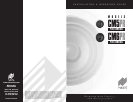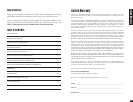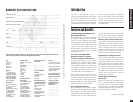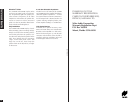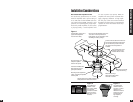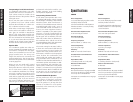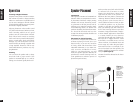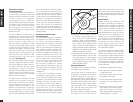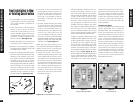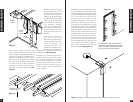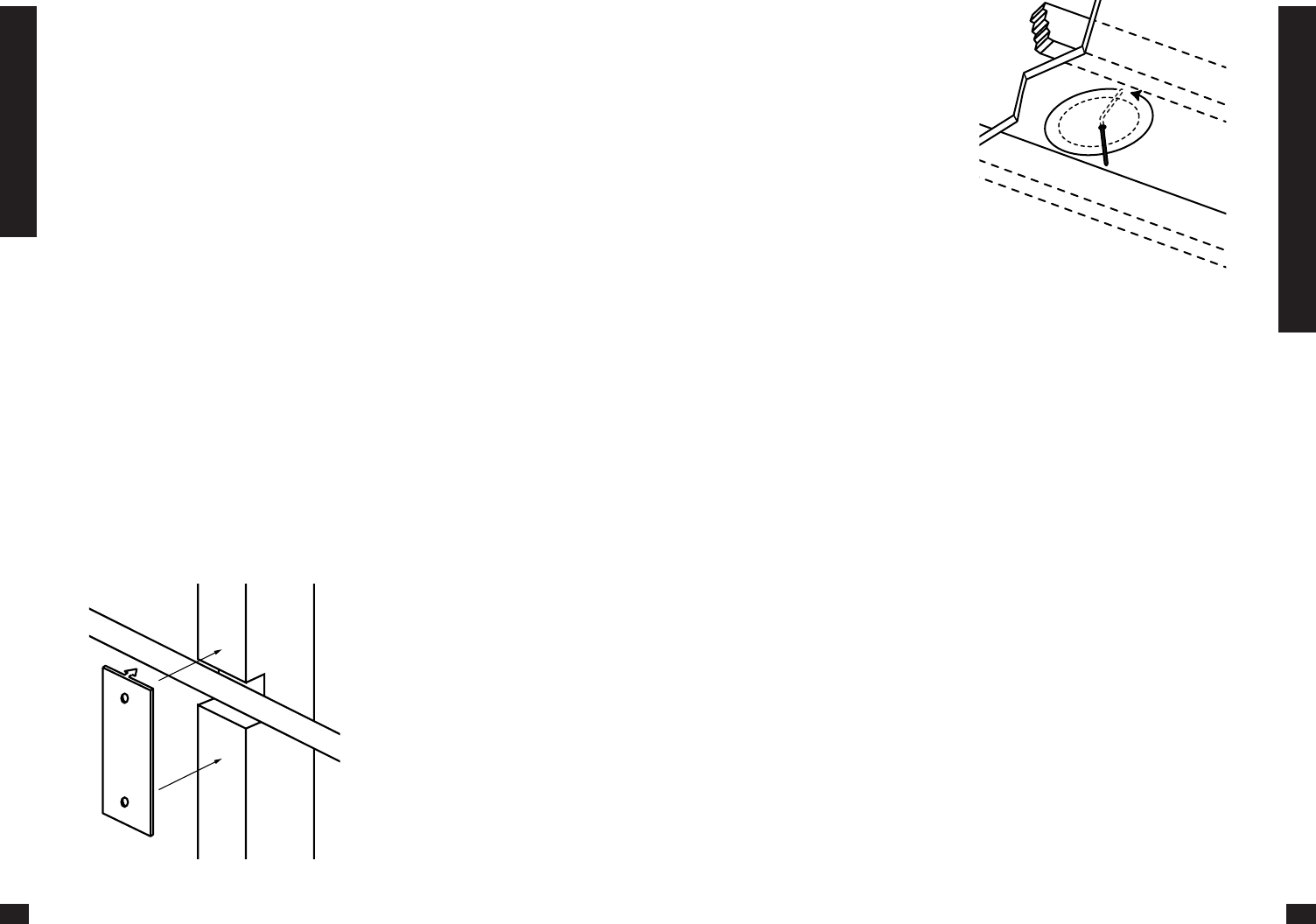
Installation in
Existing Construction
IMPORTANT: Before you cut into any
wall, review the sections on running
wire and speaker placement.
1. When determining the location of the
speaker cutout keep in mind that the
mounting dogs will extend 3/4" beyond
the cutout. make sure that you do not
place the edge of the cutout directly
next to a ceiling joist. Locate the joists
using a stud sensor or hand-knocking.
2. Once you have determined a possible
position for the cutout, drill a 1/8” pilot
hole just barely through the ceiling
(1/2” to 5/8” deep in most homes)
about an inch below the center of your
proposed speaker location. BE VERY
CAREFUL NOT TO DRILL THROUGH
EXISTING WIRES, PIPES, OR STRUC-
TURE. IF YOU FEEL ANY EXTRA RESIS-
TANCE AS YOU ARE DRILLING, STOP.
3. Cut a foot-long piece of coat hanger.
Bend the wire (creating a right angle)
leaving 4-1/8" at one end for the
CM5PR and 4/3/4" for the CM6PR (this
allows for the extra width of the mount-
ing dogs). Poke the “L-shaped” wire
into the pilot hole and turn it in a com-
plete circle and move it into the ceiling
cavity to make sure you have approxi-
mately 3-3/4" of depth. If the wires
movement is obstructed by anything, fill
the hole(s) with spackle and try another
location. (See Figure 14)
4. If the coat hanger moves freely in a com-
plete circle, hold the supplied template
up to the ceiling surface. Outline the cir-
cular cutout on the ceiling surface with a
pencil. Drill starting point with a 1/4" bit.
5. If you are cutting drywall use a
sheetrock or keyhole saw. Cut the hole
with the saw at a 45° angle. That way,
the drywall section can be replaced
cleanly if there is an unseen obstruction
behind the wall. BE VERY CAREFUL
NOT TO SAW THROUGH EXISTING
WIRES, PIPES, OR STRUCTURE. IF
YOU FEEL EXTRA RESISTANCE AS
YOU ARE CUTTING, STOP.
6. If you are cutting into a plaster ceiling,
use masking tape to outline your pen-
ciled circle and use a razor to score the
plaster down to the lath beneath. Then
use a chisel to remove all of the plaster
within the taped outline. To actually cut
the lathe, two methods are used profes-
sionally; sawing with a metal cutting
blade on a sabre saw is the quickest
and the riskiest. Sawing a lathe with a
sabre saw can easily vibrate plaster off
the ceiling in a completely distant loca-
tion creating more patchwork. If you
have the patience, use a pair of tin snips
to slowly nip away at the lath instead.
There is little risk with this method, it is
just time consuming.
14
Installation in Existing Construction
Figure 14
Installation
Fundamentals
Running the Speaker Wire in New
Construction
If you have doubts about whether you are
capable of installing a Niles ceiling mount
loudspeakers, consult a Niles dealer or
professional installer. They have special
tools, techniques, and experience to make
the impossible possible. The installer can
provide you with an estimate before any
work is done.
Scheduling and Preparation
Plan to schedule the speaker wiring after
the electrical wiring is finished. That way
you can avoid wire routes which could
potentially induce hum over the speaker
wire. The basic rules are:
• Never run speaker wire through the
same hole as an electrical cable.
• Never run speaker wire into the same
J-box as electrical cable.
• Avoid running the speaker wire beside
the electrical cable. Keep your speaker
cable at a distance of at least 18"-22"
from any electrical power cable.
Side-by-side wiring is unavoidable in par-
ticular spots in every house, just move the
speaker wire route away as soon as possi-
ble. If construction forces a side by side
run for more than ten feet, install metal
conduit or shielded speaker wire. Low-
voltage wires such as doorbells, inter-
coms, telephone, security, or television
cannot cause interference or hum on your
speaker wires, so you can safely run all of
them at the same time, through the same
holes, side-by-side.
Before you drill any holes, mount the
speaker brackets in the desired speaker
locations and mount p-rings or open
backed J-boxes where the in-wall volume
controls and stereo equipment will be.
Safety First!
Wear gloves, safety goggles and head pro-
tection when drilling. Avoid nails, they ruin
bits and they can create injury. Pay particu-
lar care when using “hole-hogs” and other
powerful electric drills; the torque of the
drill when suddenly stopped by a nail can
break the wrist of a strong man.
Drilling
Use a bit that is large enough for the wires
you plan to run. An auger bit is the pre-
ferred bit for rough-in wiring. It will actu-
ally pull itself through the wood, so that
the drill motor, not you, does most of the
work. You may be drilling a lot of holes,
so this is an important consideration.
Always drill the holes in the center of the
stud. If you have to notch the stud or drill
the hole closer than one inch from the
edge of the stud, protect the wire with a
nail plate (See Figure 7).
When drilling holes in ceiling joists drill
in the center of the joists and try to locate
the hole near the end of the joist. DO
NOT drill through a “gluelam” or any
load bearing beam without the direction
of your contractor.
9
Installation Fundamentals
Figure 7



